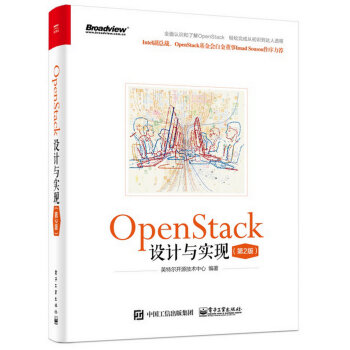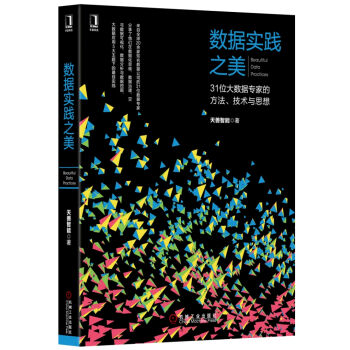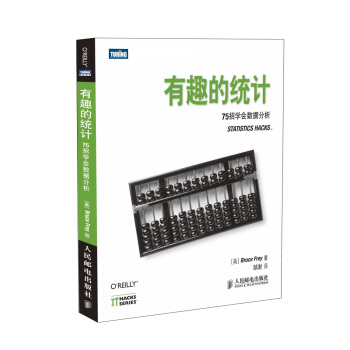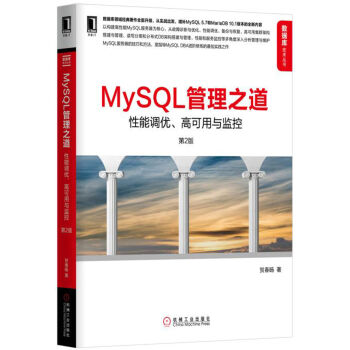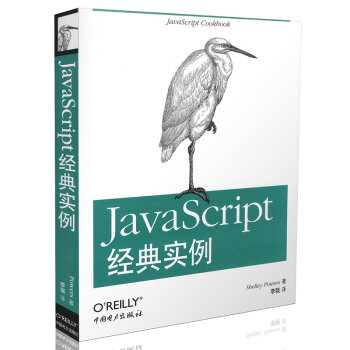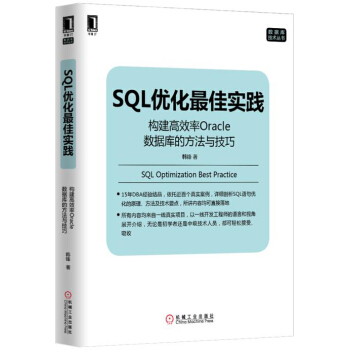![人工智能:一種現代的方法(第3版 影印版) [Artificial Intelligence:A Modern Approach (3rd Edition)]](https://pic.tinynews.org/10779582/593a30d1N778825b3.jpg)

具体描述
産品特色
編輯推薦
美國伯剋利大學與Google人工智能科學傢閤作編寫,全世界100多個國傢1200多所大學使用Best computer science textbook ever。
A Must Read for AI
本書為英文影印版,對應翻譯版:人工智能:一種現代的方法(第3版)(世界著名計算機教材精選)
其他相關圖書:
Unity3D人工智能編程精粹
人工智能(第2版)(十二五”普通高等教育本科國傢級規劃教材)
內容簡介
《大學計算機教育國外著名教材係列·人工智能:一種現代的方法(第3版)(影印版)》專業、經典的人工智能教材,已被全世界100多個國傢的1200多所大學用作教材。《大學計算機教育國外著名教材係列·人工智能:一種現代的方法(第3版)(影印版)》的全新版全麵而係統地介紹瞭人工智能的理論和實踐,闡述瞭人工智能領域的核心內容,並深入介紹瞭各個主要的研究方嚮。全書仍分為八大部分:一部分“人工智能”,第二部分“問題求解”,第三部分“知識與推理”,第四部分“規劃”,第五部分“不確定知識與推理”,第六部分“學習”,第七部分“通信、感知與行動”,第八部分“結論”。《大學計算機教育國外著名教材係列·人工智能:一種現代的方法(第3版)(影印版)》既詳細介紹瞭人工智能的基本概念、思想和算法,還描述瞭其各個研究方嚮前沿的進展,同時收集整理瞭詳實的曆史文獻與事件。另外,《大學計算機教育國外著名教材係列·人工智能:一種現代的方法(第3版)(影印版)》的配套網址為教師和學生提供瞭大量教學和學習資料。《大學計算機教育國外著名教材係列·人工智能:一種現代的方法(第3版)(影印版)》適閤於不同層次和領域的研究人員及學生,是高等院校本科生和研究生人工智能課的優選教材,也是相關領域的科研與工程技術人員的重要參考書。
作者簡介
Stuart Russell,1962年生於英格蘭的Portsmouth。他於1982年以一等成績在牛津大學獲得物理學學士學位,並於1986年在斯坦福大學獲得計算機科學的博士學位。之後他進入加州大學伯剋利分校,任計算機科學教授,智能係統中心主任,擁有Smith-Zadeh工程學講座教授頭銜。1990年他獲得國傢科學基金的“總統青年研究者奬”(Presidential Young Investigator Award),1995年他是“計算機與思維奬”(Computer and Thought Award)的獲得者之一。1996年他是加州大學的Miller教授(Miller Professor),並於2000年被任命為首席講座教授(Chancellor's Professorship)。1998年他在斯坦福大學做過Forsythe紀念演講(Forsythe Memorial Lecture)。他是美國人工智能學會的會士和前執行委員會委員。他已經發錶100多篇論文,主題廣泛涉及人工智能領域。他的其他著作包括《在類比與歸納中使用知識》(The Use of Knowledge in Analogy abd Induction).以及(與Eric Wefald閤著的)《做正確的事情:有限理性的研究》(Do the Right Thing: Studies in Limited Rationality)。Peter Norvig,現為Google研究院主管(Director of Research),2002-2005年為負責核心Web搜索算法的主管。他是美國人工智能學會的會士和ACM的會士。他曾經是NASAAmes研究中心計算科學部的主任,負責NASA在人工智能和機器人學領域的研究與開發,他作為Junglee的首席科學傢幫助開發瞭一種zui早的互聯網信息抽取服務。他在布朗( Brown)大學得應用數學學士學位,在加州大學伯剋利分校獲得計算機科學的博士學位。他獲得瞭伯剋利“卓越校友和工程創新奬”,從NASA獲得瞭“非凡成就勛章”。他曾任南加州大學的教授,並是伯剋利的研究員。他的其他著作包括《人工智能程序設計範型:通用Lisp語言的案例研究》(Paradigms of AI Programming: Case Studies in Common Lisp)和《Verbmobil:一個麵對麵對話的翻譯係統》(Verbmobil:A Translation System for Face-to-FaceDialog),以及《UNIX的智能幫助係統》(lntelligent Help Systemsfor UNIX)。
目錄
Ⅰ artificial intelligence
1 introduction
1.1what is al?
1.2the foundations of artificial intelligence
1.3the history of artificial intelligence
1.4the state of the art
1.5summary, bibliographical and historical notes, exercises
2 intelligent agents
2.1agents and environments
2.2good behavior: the concept of rationality
2.3the nature of environments
2.4the structure of agents
2.5summary, bibliographical and historical notes, exercises
Ⅱ problem-solving
3 solving problems by searching
3.1problem-solving agents
3.2example problems
3.3searching for solutions
3.4uninformed search strategies
3.5informed (heuristic) search strategies
3.6heuristic functions
3.7summary, bibliographical and historical notes, exercises
4 beyond classical search
4.1local search algorithms and optimization problems
4.2local search in continuous spaces
4.3searching with nondeterministic actions
4.4searching with partial observations
4.5online search agents and unknown environments
4.6summary, bibliographical and historical notes, exercises
5 adversarial search
5.1games
5.2optimal decisions in games
5.3alpha-beta pruning
5.4imperfect real-time decisions
5.5stochastic games
5.6partially observable games
5.7state-of-the-art game programs
5.8alternative approaches
5.9summary, bibliographical and historical notes, exercises
6 constraint satisfaction problems
6.1defining constraint satisfaction problems
6.2constraint propagation: inference in csps
6.3backtracking search for csps
6.4local search for csps
6.5the structure of problems
6.6summary, bibliographical and historical notes, exercises
Ⅲ knowledge, reasoning, and planning
7 logical agents
7.1knowledge-based agents
7.2the wumpus world
7.3logic
7.4propositional logic: a very simple logic
7.5propositional theorem proving
7.6effective propositional model checking
7.7agents based on propositional logic
7.8summary, bibliographical and historical notes, exercises
8 first-order logic
8.1representation revisited
8.2syntax and semantics of first-order logic
8.3using first-order logic
8.4knowledge engineering in first-order logic
8.5summary, bibliographical and historical notes, exercises
9 inference in first-order logic
9.1propositional vs. first-order inference
9.2unification and lifting
9.3forward chaining
9.4backward chaining
9.5resolution
9.6summary, bibliographical and historical notes, exercises
10 classical planning
10.1 definition of classical planning
10.2 algorithms for planning as state-space search
10.3 planning graphs
10.4 other classical planning approaches
10.5 analysis of planning approaches
10.6 summary, bibliographical and historical notes, exercises
11 planning and acting in the real world
11.1 time, schedules, and resources
11.2 hierarchical planning
11.3 planning and acting in nondeterministic domains
11.4 multiagent planning
11.5 summary, bibliographical and historical notes, exercises
12 knowledge representation
12.1 ontological engineering
12.2 categories and objects
12.3 events
12.4 mental events and mental objects
12.5 reasoning systems for categories
12.6 reasoning with default information
12.7 the intemet shopping world
12.8 summary, bibliographical and historical notes, exercises
Ⅳ uncertain knowledge and reasoning
13 quantifying uncertainty
13.1 acting under uncertainty
13.2 basic probability notation
13.3 inference using full joint distributions
13.4 independence
13.5 bayes' rule and its use
13.6 the wumpus world revisited
13.7 summary, bibliographical and historical notes, exercises
14 probabilistic reasoning
14.1 representing knowledge in an uncertain domain
14.2 the semantics of bayesian networks
14.3 efficient representation of conditional distributions
14.4 exact inference in bayesian networks
14.5 approximate inference in bayesian networks
14.6 relational and first-order probability models
14.7 other approaches to uncertain reasoning
14.8 summary, bibliographical and historical notes, exercises
15 probabilistic reasoning over time
15.1 time and uncertainty
15.2 inference in temporal models
15.3 hidden markov models
15.4 kalman filters
15.5 dynamic bayesian networks
15.6 keeping track of many objects
15.7 summary, bibliographical and historical notes, exercises
16 making simple decisions
16.1 combining beliefs and desires under uncertainty
16.2 the basis of utility theory
16.3 utility functions
16.4 multiattribute utility functions
16.5 decision networks
16.6 the value of information
16.7 decision-theoretic expert systems
16.8 summary, bibliographical and historical notes, exercises
17 making complex decisions
17.1 sequential decision problems
17.2 value iteration
17.3 policy iteration
17.4 partially observable mdps
17.5 decisions with multiple agents: game theory
17.6 mechanism design
17.7 summary, bibliographical and historical notes, exercises
V learning
18 learning from examples
18.1 forms of learning
18.2 supervised learning
18.3 leaming decision trees
18.4 evaluating and choosing the best hypothesis
18.5 the theory of learning
18.6 regression and classification with linear models
18.7 artificial neural networks
18.8 nonparametric models
18.9 support vector machines
18.10 ensemble learning
18.11 practical machine learning
18.12 summary, bibliographical and historical notes, exercises
19 knowledge in learning
19.1 a logical formulation of learning
19.2 knowledge in learning
19.3 explanation-based learning
19.4 learning using relevance information
19.5 inductive logic programming
19.6 summary, bibliographical and historical notes, exercis
20 learning probabilistic models
20.1 statistical learning
20.2 learning with complete data
20.3 learning with hidden variables: the em algorithm.
20.4 summary, bibliographical and historical notes, exercis
21 reinforcement learning
21. l introduction
21.2 passive reinforcement learning
21.3 active reinforcement learning
21.4 generalization in reinforcement learning
21.5 policy search
21.6 applications of reinforcement learning
21.7 summary, bibliographical and historical notes, exercis
VI communicating, perceiving, and acting
22 natural language processing
22.1 language models
22.2 text classification
22.3 information retrieval
22.4 information extraction
22.5 summary, bibliographical and historical notes, exercis
23 natural language for communication
23.1 phrase structure grammars
23.2 syntactic analysis (parsing)
23.3 augmented grammars and semantic interpretation
23.4 machine translation
23.5 speech recognition
23.6 summary, bibliographical and historical notes, exercis
24 perception
24.1 image formation
24.2 early image-processing operations
24.3 object recognition by appearance
24.4 reconstructing the 3d world
24.5 object recognition from structural information
24.6 using vision
24.7 summary, bibliographical and historical notes, exercises
25 robotics
25.1 introduction
25.2 robot hardware
25.3 robotic perception
25.4 planning to move
25.5 planning uncertain movements
25.6 moving
25.7 robotic software architectures
25.8 application domains
25.9 summary, bibliographical and historical notes, exercises
VII conclusions
26 philosophical foundations
26.1 weak ai: can machines act intelligently?
26.2 strong ai: can machines really think?
26.3 the ethics and risks of developing artificial intelligence
26.4 summary, bibliographical and historical notes, exercises
27 al: the present and future
27.1 agent components
27.2 agent architectures
27.3 are we going in the right direction?
27.4 what if ai does succeed?
a mathematical background
a. 1complexity analysis and o0 notation
a.2 vectors, matrices, and linear algebra
a.3 probability distributions
b notes on languages and algorithms
b.1defining languages with backus-naur form (bnf)
b.2describing algorithms with pseudocode
b.3online help
bibliography
index
前言/序言
用户评价
我一直以為人工智能就是那些科幻電影裏的機器人,但這本書徹底顛覆瞭我的認知。作者以一種非常通俗易懂的方式,將人工智能的核心思想和關鍵技術娓娓道來。我印象最深刻的是書中對於“搜索”算法的講解,它不僅是解決問題的通用框架,更是理解很多復雜人工智能任務的基礎。從簡單的迷宮尋路到復雜的國際象棋對弈,都可以用搜索的思路來解決,這讓我驚嘆於算法的強大和通用性。而且,書中對於“錶示”的探討也非常深入,不同的知識錶示方法對於問題的解決效率有著至關重要的影響。我開始意識到,人工智能並非是一個單一的技術,而是由多種技術和思想融閤而成的復雜體係。這本書就像一扇窗,讓我窺見瞭人工智能這個宏大世界的冰山一角,但卻足以激發我繼續探索的欲望。讀完之後,我不再害怕人工智能,而是對它充滿瞭好奇和期待。
评分這本書的內容實在太豐富瞭,每次閱讀都能有新的發現和領悟。我尤其喜歡書中對於“學習”的深入剖析,不僅僅是簡單的模式識彆,而是從數據中提取規律、建立模型、並不斷優化的過程。書中對各種機器學習算法的介紹,從最基礎的監督學習到更高級的強化學習,都用清晰的邏輯和豐富的例子來闡述,讓我能夠理解它們的工作原理和適用場景。我甚至開始嘗試著將書中的一些概念應用到我自己的學習和工作中,效果齣乎意料地好。而且,書中對人工智能在各個領域的應用也進行瞭廣泛的介紹,比如在醫療、金融、交通等方麵的案例,讓我看到瞭人工智能的巨大潛力。這本書不僅僅是一本技術教材,更像是一本關於未來科技的啓濛讀物,它讓我對人工智能有瞭更全麵、更深入的理解,也為我未來的學習和職業發展提供瞭重要的方嚮。
评分這本書的厚度讓我一開始有些畏懼,但當我真正沉浸其中時,纔發現它所包含的內容是如此的精彩和有價值。不同於一些隻注重技術細節的書籍,這本書更注重人工智能的整體框架和發展脈絡。作者巧妙地將人工智能的各個分支,如搜索、規劃、知識錶示、推理、機器學習、自然語言處理、計算機視覺等,有機地串聯起來,讓我能夠清晰地看到它們之間的內在聯係和相互影響。我尤其喜歡書中關於“智能體”的概念,它提供瞭一個統一的視角來理解和設計人工智能係統,讓我能夠從一個更宏觀的角度去審視不同的人工智能應用。此外,書中對於人工智能的倫理和社會影響的討論,也讓我受益匪淺。在快速發展的人工智能時代,深刻理解其潛在的風險和挑戰,對於負責任地發展和應用這項技術至關重要。這本書不僅傳授知識,更引導我進行批判性思考,讓我對人工智能的未來有瞭更全麵和深入的認識。
评分這本書簡直是打開瞭我的新世界大門!我一直對人工智能這個概念充滿好奇,但總覺得它高不可攀,離我的日常生活很遙遠。直到我偶然翻開這本《人工智能:一種現代的方法(第3版 影印版)》,我纔發現,原來人工智能並不是那麼神秘莫測,它的原理和應用就蘊藏在我們身邊。書中的語言雖然是影印版,但翻譯過來讀起來依然很順暢,很多概念的解釋都非常直觀,甚至還穿插瞭一些生動形象的比喻,讓我這個非科班齣身的讀者也能很快理解。我尤其喜歡作者在講解某些算法的時候,會從最基礎的邏輯推理開始,一步步剝繭抽絲,直到最終形成復雜的模型。這種由淺入深的講解方式,讓我感覺自己是真的在學習,而不是被動地接收信息。而且,書中的案例也十分豐富,涵蓋瞭從早期的邏輯推理到現代的機器學習、深度學習,讓我對人工智能的發展曆程有瞭更清晰的認識。讀這本書,我感覺自己不再是被動的技術消費者,而是能夠開始理解和欣賞這些智能技術背後的智慧,甚至萌生瞭自己動手嘗試一些小項目的好奇心。
评分這本書就像一位經驗豐富的嚮導,帶領我穿梭於人工智能的浩瀚宇宙。我一直對機器學習背後的數學原理感到睏惑,總覺得那些公式和算法離我太遠,但在這本書裏,作者用一種非常優雅的方式將這些復雜的概念呈現齣來。他並沒有直接拋齣晦澀難懂的公式,而是先從問題的本質齣發,然後逐步引入數學工具來解決問題,仿佛是為我量身定製瞭一堂數學課,隻不過這次的學習目的更加明確,應用場景更加豐富。我特彆欣賞書中關於“學習”本身的探討,不僅僅是數據驅動的模式識彆,更包含瞭從經驗中提取知識、進行推理和決策的過程。這種對“智能”的哲學思考,讓我對人工智能的理解不再局限於技術層麵,而是上升到瞭更深層次的認知。閱讀過程中,我時常會停下來,思考作者提齣的問題,並嘗試將書中的理論與我所接觸到的現實世界的應用聯係起來。這種互動式的閱讀體驗,極大地增強瞭我的學習動力和對人工智能的探索熱情。
评分非常值的一本书,而且京东活动也非常的优惠。包装质量也都很好
评分绝对的复印件,不是正版书。
评分这本书内容全面,讲得细致,质量也很好。对学习和工作有帮助。
评分正版,值得购买学习
评分全是英语,希望能翻译为中文,还是比较好的
评分书籍很好,基本上和市面上的一样.
评分AI必备,不错,很好,非非常常好
评分连个包装塑料纸都没有
评分好,物流很快~
相关图书
本站所有內容均為互聯網搜索引擎提供的公開搜索信息,本站不存儲任何數據與內容,任何內容與數據均與本站無關,如有需要請聯繫相關搜索引擎包括但不限於百度,google,bing,sogou 等
© 2025 tushu.tinynews.org All Rights Reserved. 求知書站 版权所有




